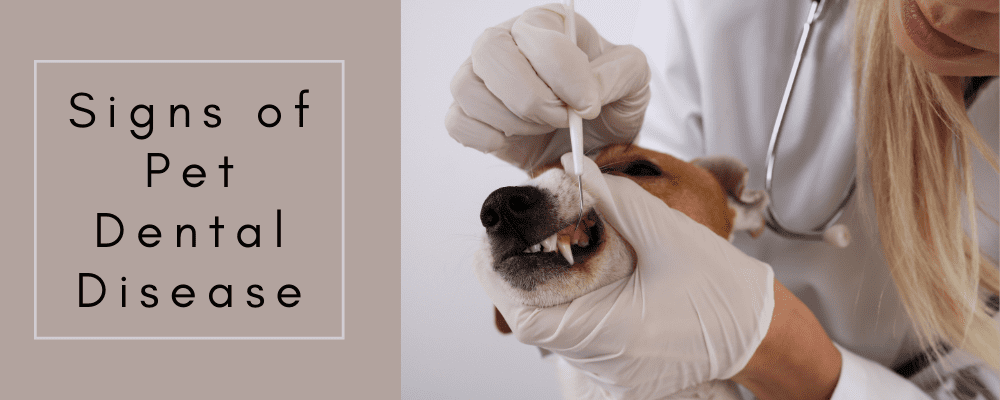Gum disease is usually silent. Pets don’t always show obvious signs of dental pain in the beginning and often can still eat even if their mouth is painful. If your pet has bad breath, that means there is infection in its mouth. Once dental disease advances, it can devastate your pet’s mouth, causing chronic pain, eroded gums, missing teeth, and bone loss. The infection can even lead to diseases of the heart, liver and kidneys.
Pets often feel so much better after having dental care that their owners are surprised in hindsight just how painful they were. Fortunately, it doesn’t have to be that way. Though dental disease in dogs and cats is regrettably common, it can be prevented.
Some symptoms of severe gum disease include:
- Problems picking up food
- Swollen, bleeding or red gums
- Loose, broken or discolored teeth
- Blood in the water bowl or on chew toys
- Bad breath (halitosis)
- “Talking” or making noises when a dog eats or yawns
- Bumps or lumps in the mouth
- Drooling
- Rubbing or pawing at the face
- Not wanting the head touched (head shyness)
- Chewing on one side of the mouth
- Sneezing or nasal discharge (advanced gum disease in the upper teeth can destroy the bone between the nasal and oral cavity)
If your pet shows any of these symptoms, or just hasn’t had a dental exam in the last year, call us to schedule an appointment.
